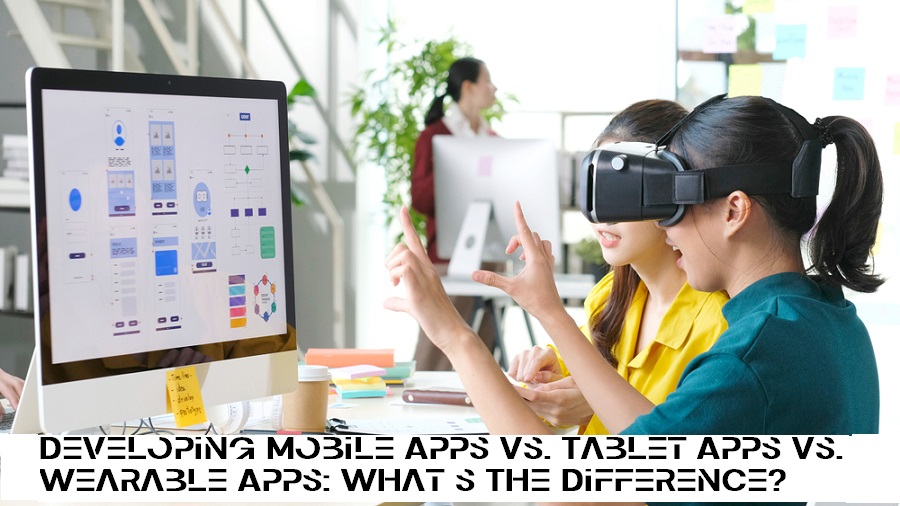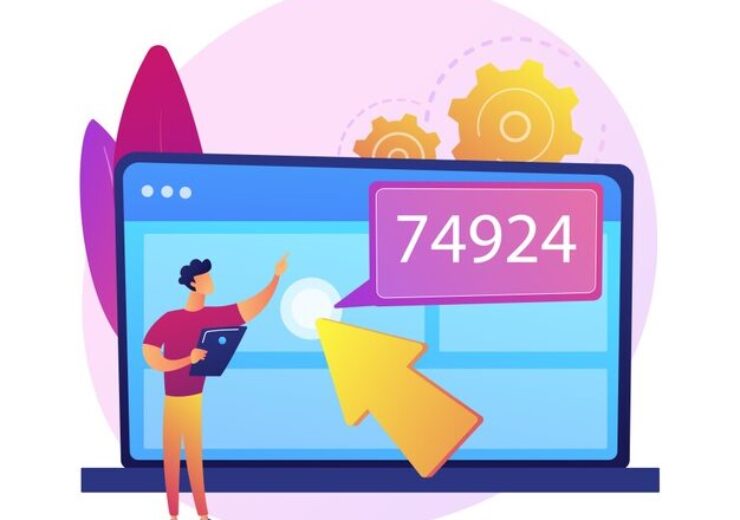Developing Mobile Apps Vs. Tablet Apps Vs. Wearable Apps: What’s The Difference?

In the modern digital era, it is hard to imagine our life without Smartphones, tablets, and wearable technologies. The main reason is that these devices have become a part of our daily activities. These are quite efficient options to stay connected and access quick information easily. Communication becomes highly efficient using these technologies.
Application Development:
———————————
Every technology especially comes with its benefits and challenges. These highly efficient technologies are massively suitable for the business to reach customers worldwide easily. Are you looking to improve your business marketing and growth with technology?
The availability of the best mobile app development services lets you easily develop your official business app with classic features. You have a better option for easily developing mobile, tablet, and wearable apps.
Mobile App Development:
———————————
In the modern day, Mobile apps have been dominating the market trends. These ultimately enhance the branding and customization with the user interactions. These are the perfect option for achieving perfect customer engagement.
There are several mobile application development platforms available, including HTML, CSS, JavaScript, and many more, that may be used to develop mobile applications. It is the perfect option for creating stunning HTML apps. These also support the frameworks such as Angular JS1, Angular 2+, Vue, Reacts, and more.
Based on a recent report, more than 85% of Smartphone users have been making online purchases. Portable devices have been helping the biggest commerce sales for more than $2.3 trillion.
Many businesses choose android app development to bring quick service and reach customers. Responsive mobile websites are also easy to maintain, so these could optimize the app’s speed. Mobile apps provide customization options, and users can extensively set their preferences.
Pros:
- Cost-efficient
- Time-effective development
- Explicit grid layout
- Zero time to set up
- Easy to learn
- Platform, gesture, and rotation detection
- Convenience
- Portability
- Larger market share
Cons:
- Limited hardware capabilities
- Smaller screen size
Wearable Device App Development:
———————————
Wearables are like having a multimedia assistant on your wrist! Smartwatches, VR headsets, and heart rate monitors – they’re all cutting-edge technological tools capable of connecting to the web. Take Google Glass, Apple Watch, and more for instance – these innovative devices make it possible to detect, acquire, and disseminate data with ease.
Wearable devices especially work with the application and in tandem with other devices. The wearable device app development has been integrating with average people’s life. These are also used for responding to and retrieving the data with alerts.
These apps are also suitable for receiving feedback, reminders, and notifications. It is the perfect option for reminding about one’s health and fitness goals.
These are significant options for sending real-time data across an extravagant scale. Wearable technology is perfect for connecting activity trackers, smart clothing, smartwatches, and more.
Pros:
- Ability to monitor fitness levels
- View text messages
- Track location with GPS
- Hands-free and portable
- Eliminating the need to take devices out of pockets
- Improved safety
- Better sleep quality
- Increased productivity
- Instant access to information
Cons:
- Fairly short battery life
- Expensive
- Measure data inaccurately on occasion
Tablet App Development:
———————————
Tablets are amazingly growing in the mobile markets. The technology provides a massive opportunity for increased user engagement and business development. Based on a report, mobile shoppers have been converting 160% higher compared to mobile responsive sites.
Tablet app development can be easily custom and cost-effective solutions for your business marketing. These also help your business to gain a competitive advantage. Tablet Apps can be seen in large screen sizes. These also allow the developers to create an interactive and immersive user experience.
Tablets also have astounding hardware capabilities compared to mobile or wearable devices. These also support complex features as well as functionalities.
Based on a recent report, more than 2.4% of the population has Tablets, and the global market share has been increasing. Sometimes, developing the tablet app is expensive due to the large screen sizes and increased hardware capabilities.
Pros:
- Supports complex features
- Larger screen size
- Better user experience
Cons:
- Small tablet market share
- Not portable
Differences Between Mobile Apps and Tablet App Development:
———————————
Key differences between mobile and Tablet apps vary in features and functionalities. Understanding mobile and tablet users are important in delivering powerful UI and UX.
✔ Device Usage:
Relevant differences between developing mobile devices and tablets are device usage. Normally, the Mobile device interactions are higher as the screen size is low. Tablets are used for various purposes, so these result in longer periods. The Tablet app is quite helpful for prioritizing.
✔ Screen Sizes:
Tablets normally provide a higher resolution with a large screen size. The Smartphone has a smaller screen compared to Tablets. The Tablet app also displays more information on the screen, which is a ready-to-read option.
Creating the User Interface with iOS app development is easier as well as completely intuitive to use. Mobile app UI is required to provide more data in a simplified manner. These display essential information and information can be easily delivered.
✔ Usage Location:
Mobile application is highly used across different scenarios and locations. Mobile devices can be used for social as well as emotional contexts. User demographics are one of the main differences between tablets and smartphones. Developing apps for mobile devices is easier.
✔ User Interface and Navigation:
Tablets are designed with larger screens with detailed information. Users highly accept mobile phones, which provide better reach on the app’s features.
Designing the mobile app is quick with accessing information. Tablet app Features can also be spread across multiple screens or displayed in a sidebar. These would provide a rich user experience.
✔ Number Of Users:
Users and less emotional platforms can extensively use tablets. Normally, the apps have integrated features that facilitate logging with different users. These are also significant options for accessing sensitive information.
✔ Hardware Capabilities:
Phones and Tablets have different hardware capabilities and performance levels. Phones have less powerful processors compared to Tablets. It can affect how quickly the app performs the task. Normally, most phones do not support advanced graphics or Augmented Reality.
✔ Development Cost:
The cost of developing Mobile Apps and Tablet Apps depends on coding and testing functions. The coding required for phone apps is higher compared to Tablets. So, the cost of developing phone apps will be higher.
Differences Between Phone Apps and Wearable Apps:
———————————
Normally, Wearable devices would differ from Smartphones in many ways. Mobile and Wearable devices are portable and helpful for carrying anywhere.
Wearable is easy to wear in the hands and helpful for sending and carrying the data. The cost of app development varies for both devices. Wearables will provide instant access to real-time information.
Wearable app development is in the developing phase, but the market has been increasing. The wearable devices market has widely increased to exponential growth furthermore. These also extensively showed better revenue of US$4,906.00m by 2023.
o Dimensions:
The size of the display screen varies between the Mobile phone and the Wearable.
o User Interaction:
User experience is also minimal, and they are also in existence sometimes. You have a few functions in the smartwatch.
o Platform:
The mobile app can also perform on Tablets. The wearable apps are designed for communicating or accessing apps on mobile devices. These need to be carried out on the intended task.
App development on the wearable does not require more coding than a mobile phone. These could be extensively displayed less and performed with connecting data received and sent. Most of the mobile apps made for Smartphones are different from wearable ones.
o Functionality:
Hardware in wearable devices will be smaller and less powerful than a mobile device. It will be the perfect option for adding a better range of communication. Wearable device apps are used either on phone apps. But these have limited functions and could be easily customized with wearable app developments.
Factors To Consider When Deciding Between Mobile Apps, Wearable Apps, And Tablet Apps:
Prioritizing Mobile Apps, Wearable apps, or Tablet Apps is quite important. You need to seek the app developers before deciding details of the project. Mobile, wearable, and tablet apps can be designed based on User Behavior and User Experience (UX).
A few key factors to consider are:
- Understand the target audience
- Usage habits
- Determine the platform
- Security
- End-user Experience
- Team Knowledge and Ups-killing
- Requirements
- Scalability
For example, when a user prefers to access the app on a mobile phone on the go, then a phone app could be best for development. Normally, more than 86% of Tablet owners have been using the device at home.
Conclusion:
There are many differences between a mobile app, a tablet app, and a wearable app. You must choose the best app development based on your niche, operating system, and platform.
Developing a mobile, tablet, or wearable app for the same OS as iOS or Android does not make much difference in costs. Developing apps for different OS implies considering various factors, such as a market share in each platform.




